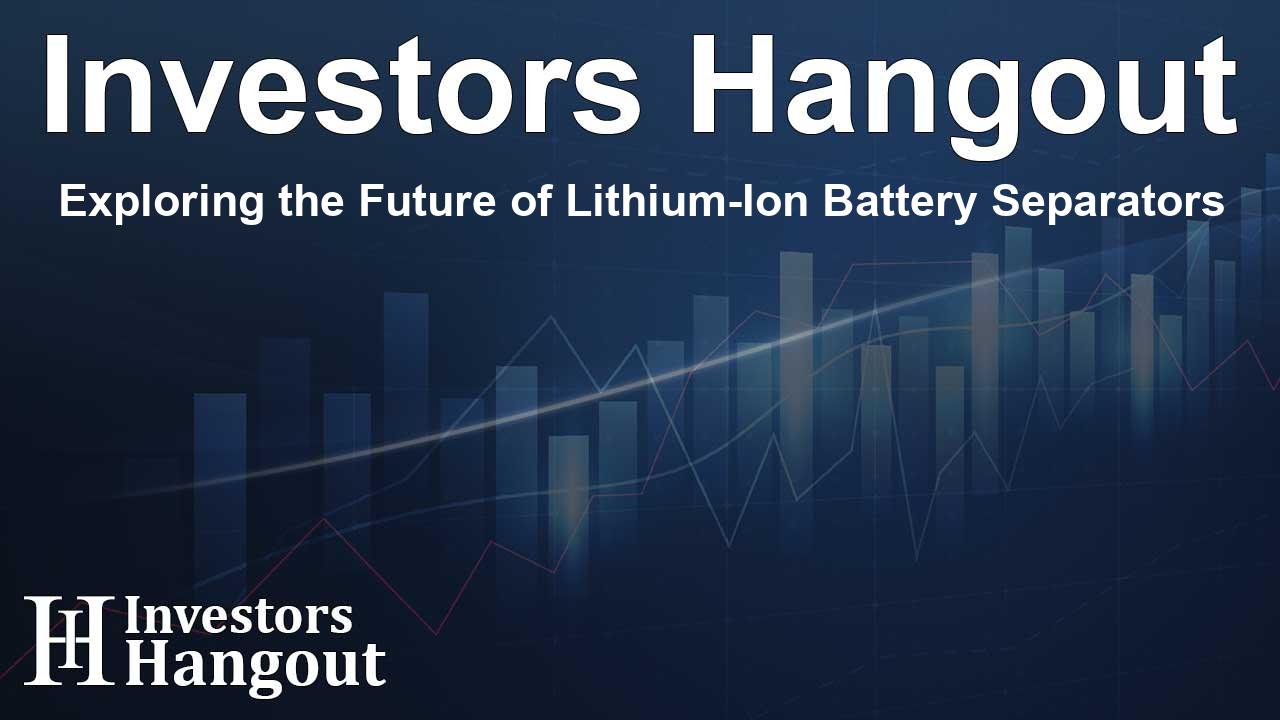Exploring the Future of Lithium-Ion Battery Separators

The Lithium-Ion Battery Separator Market Overview
The lithium-ion battery separator market is undergoing a significant transformation, projected to reach USD 20.9 billion in value by 2035. This growth is largely driven by the accelerating adoption of electric vehicles (EVs), advancements in battery technologies, and an increasing emphasis on renewable energy storage solutions.
Key Drivers of Market Growth
Several factors are propelling the demand for lithium-ion battery separators, including:
Rapid Adoption of Electric Vehicles
As the world gravitates towards electric mobility, the demand for high-performance lithium-ion batteries continues to surge. This trend is significantly influencing the battery separator market as EVs rely heavily on these components for improved efficiency and safety.
Technological Innovations in Battery Design
Innovations in separator technologies, such as ceramic-coated and composite materials, are enhancing both the performance and safety of batteries. These advancements are pivotal in meeting the industry’s evolving needs, particularly in high-performance applications like electric vehicles and renewable energy storage.
Growing Commitment to Renewable Energy
With the rise of solar and wind energy, there is an increasing need for efficient energy storage solutions, further driving the demand for lithium-ion batteries and, consequently, for high-quality separators.
Increasing Regulatory Standards for Safety
As safety concerns continue to rise, regulatory bodies are imposing stricter standards on battery components. Manufacturers are responding by developing advanced separators that offer enhanced thermal stability and performance.
Market Dynamics and Trends
The lithium-ion battery separator market is influenced by a complex interplay of demand and supply dynamics:
Challenges in the Supply Chain
Raw material prices are subject to fluctuations, and geopolitical factors can impact supply chains, compelling manufacturers to adapt quickly to changing market conditions. Additionally, manufacturers face challenges in sourcing materials, which may affect production timelines and costs.
Investment in Research and Development
Industry players are significantly investing in R&D to remain competitive in the market. As companies explore new materials and designs, innovative solutions are emerging that address both performance and safety concerns.
Competitive Landscape in the Lithium-Ion Battery Separator Market
The competitive landscape is characterized by several key players:
- Asahi Kasei Group
- Daramic
- Entek International LLC
- Targray Technology International Inc.
- Freudenberg & Co. KG
- Mitsubishi Plastics Inc.
- TEIJIN Limited
- Porous Power Technologies LLC
- UBE Industries Ltd.
- W-Scope Corporation
These companies are focusing on strategic partnerships, technological innovations, and expanding their production capacities to enhance their market share and meet the increasing demand.
Market Segmentation Analysis
The lithium-ion battery separator market is segmented based on material, temperature resistance, and thickness:
Material Composition
The separator materials encompass polypropylene, polyethylene, and nylon, with polyethylene anticipated to dominate the market due to its electrochemical stability and affordability.
Temperature Resistance
Separators are categorized by temperature resistance, targeting applications that range from 10°C to 25°C and extending to 130°C to 135°C.
Thickness Specifications
Thickness varies across products, with common measurements of 16µm, 20µm, and 25µm to cater to diverse applications in automotive and renewable sectors.
Future Prospects of the Market
The future of the lithium-ion battery separator market looks promising. The combined efforts in R&D and a strong push for sustainable energy solutions are likely to create new opportunities. Industry stakeholders are expected to prioritize innovation, yielding separators that not only enhance battery performance but also support environmental goals.
Frequently Asked Questions
1. What factors drive the growth of the lithium-ion battery separator market?
Key factors include the rapid adoption of electric vehicles, advancements in battery technologies, and a surge in renewable energy initiatives.
2. How does technology impact the performance of battery separators?
Technological innovations, such as the development of ceramic-coated separators, enhance thermal stability and overall battery efficiency, ensuring safety in high-performance applications.
3. Who are the leading players in the lithium-ion battery separator market?
Major companies include Asahi Kasei Group, Daramic, and Entek International, among others, all investing in innovations and strategic partnerships.
4. What are the main materials used for lithium-ion battery separators?
The market primarily utilizes materials like polyethylene, polypropylene, and nylon due to their specific properties suited for various applications.
5. What should we expect from the lithium-ion battery separator market in the coming years?
With continued investment in R&D, regulatory advancements, and a strong push for green technologies, the market is expected to witness sustained growth and innovation.
About The Author
Contact Lucas Young privately here. Or send an email with ATTN: Lucas Young as the subject to contact@investorshangout.com.
About Investors Hangout
Investors Hangout is a leading online stock forum for financial discussion and learning, offering a wide range of free tools and resources. It draws in traders of all levels, who exchange market knowledge, investigate trading tactics, and keep an eye on industry developments in real time. Featuring financial articles, stock message boards, quotes, charts, company profiles, and live news updates. Through cooperative learning and a wealth of informational resources, it helps users from novices creating their first portfolios to experts honing their techniques. Join Investors Hangout today: https://investorshangout.com/
The content of this article is based on factual, publicly available information and does not represent legal, financial, or investment advice. Investors Hangout does not offer financial advice, and the author is not a licensed financial advisor. Consult a qualified advisor before making any financial or investment decisions based on this article. This article should not be considered advice to purchase, sell, or hold any securities or other investments. If any of the material provided here is inaccurate, please contact us for corrections.
